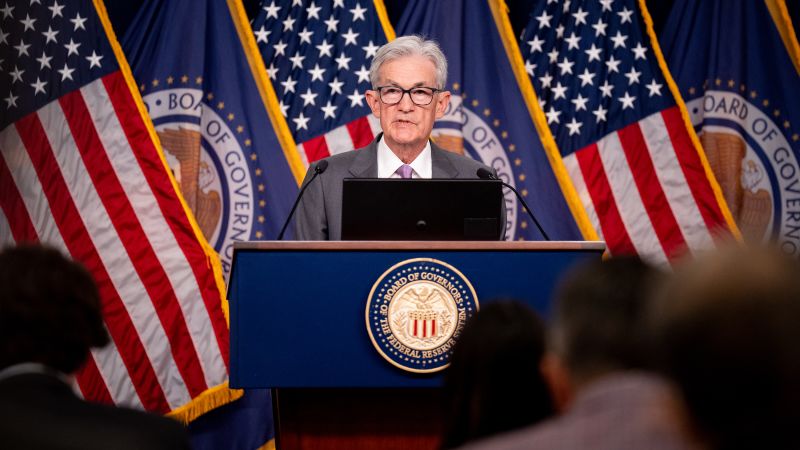Americans are finally expected to see some relief as Federal Reserve Chair Jerome Powell suggested that a rate cut is coming next month. The economy has been facing high inflation and elevated interest rates for the past two years, but recent data has shown signs of improvement. Job growth has slowed, with unemployment rising to its highest level since October 2021, prompting the Fed to consider cutting interest rates next month for the first time since 2020. The Fed is mandated by Congress to stabilize prices and strive for maximum employment, and the upcoming rate cut is seen as a step towards achieving these goals.
Recent discussions among Fed officials indicate that a majority believe it would be appropriate to implement the rate cut in September, provided the economy evolves as expected. Powell announced during an annual symposium in Wyoming that the first rate cut is imminent, signaling to markets that the Fed is preparing to take action. Wall Street has been eager for a rate cut for some time, with traders anticipating a significant cut in November following the initial rate cut in September. The size and aggressiveness of the rate cut remain uncertain, with experts closely monitoring economic indicators for clues on the Fed’s next move.
The Fed’s decisions on interest rates are influenced by economic conditions, with a high threshold for aggressive action in either direction. There are concerns that cutting rates too soon or too aggressively could lead to a resurgence of inflation, especially given the economy’s recent positive performance. While Fed officials have indicated readiness to cut rates, some remain cautious about the potential consequences. Powell has mentioned a balance between inflation and job market risks, emphasizing the need for caution in deciding on the size of the rate cut.
Analysts are closely watching economic data such as new jobless benefits applications and the upcoming August jobs report to gauge the health of the labor market. Signs of weakening job growth or rising unemployment could prompt the Fed to consider a larger rate cut in September. However, current data suggest that there is no immediate need for aggressive action, and the Fed is expected to make a more moderate rate cut next month. The upcoming jobs report will be a key factor in determining the Fed’s next steps, as any significant deviations from expected job growth numbers could influence the central bank’s decision-making process.
The uncertainty surrounding the size and timing of the rate cut has led to speculation and volatility in financial markets. While the Fed’s actions are typically seen as predictable, any unexpected moves could raise concerns about the state of the US economy. For now, the focus remains on monitoring economic indicators and assessing the need for further monetary policy intervention. The upcoming rate cut is seen as a step towards addressing inflation and employment concerns, but the ultimate impact of the Fed’s decision will depend on how the economy evolves in the coming months.


